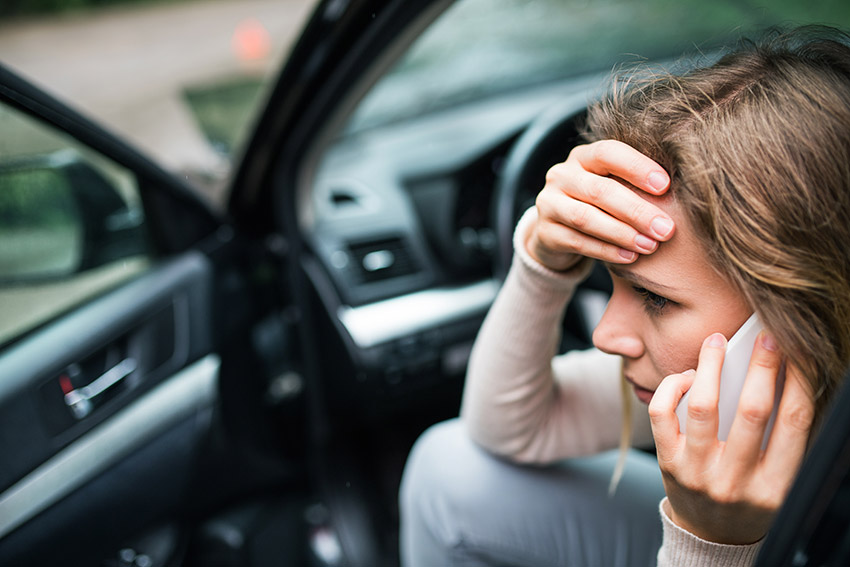
As a seasoned personal injury attorney with 30 years of experience, I’ve encountered a wide range of challenging cases. Among these, hit-and-run accidents stand out as particularly distressing for victims and their families. The abrupt nature of these incidents and the subsequent absence of accountability can leave anyone feeling helpless and overwhelmed. But what should you do if you find yourself in this situation? Let’s delve into this.
Understanding the Basics
Overview of State Laws on Fleeing Accident Scenes
In both Arizona and Illinois, leaving the scene of an accident is a criminal offense. In Arizona, depending on the severity, hit-and-run incidents can result in jail time, fines, and license revocation. Illinois law similarly requires drivers to provide personal and insurance information after an accident, with failure to do so potentially leading to misdemeanor or felony charges.
Are Hit-and-Run Accidents Civil or Criminal? Differentiating Legal Consequences
Hit-and-run accidents can fall under both civil and criminal law. While criminal charges aim to punish the offender, civil cases seek compensation for victims. In Illinois, for instance, victims can file claims against hit-and-run drivers for damages, potentially including punitive damages.
Immediate Steps to Take
What to Do After the Accident
If involved in a hit-and-run, it’s crucial to remain calm and prioritize safety. Move to a safe location and, if possible, take note of the fleeing vehicle’s details like make, model, and license plate number. This information can be invaluable for the police investigation.
What to Do After the Other Driver Leaves the Accident Scene
First, call 911 if there are injuries. Then, document everything you can about the accident, including photos of the scene, your vehicle, and any injuries. If there are witnesses, collect their contact information as well.
Process Involved After a Driver Leaves the Crash Site: A Step-by-Step Guide
- Contact the police immediately and file a report.
- Seek medical attention, even if injuries are not immediately apparent.
- Contact your insurance company to report the incident.
- Consider consulting with a personal injury attorney to understand your legal options.
Legal and Insurance Implications
Who Pays for Damages in a Hit-and-Run Accident? Exploring Liability
In many cases, your own insurance policy may cover some of the damages if the other driver is not found. This typically includes uninsured motorist coverage for bodily injuries. However, property damage might not be covered, depending on your policy.
What Types of Insurance Apply After a Hit-and-Run Accident? Coverage Details
After a hit-and-run, the relevant insurance coverages may include:
- Uninsured motorist bodily injury coverage
- Collision coverage for vehicle repair
- Personal injury protection, depending on the state and your policy
What Happens to Your Insurance Premiums if You’re in a Hit-and-Run Accident? Financial Impact
Being a victim of a hit-and-run accident might not necessarily increase your insurance premiums, especially if you are not at fault. However, this can vary by insurance provider and the specifics of your policy.
Investigative and Legal Aspects
How Do Police Investigate Hit-and-Run Accidents? Law Enforcement Procedures
Police investigations into hit-and-run accidents involve collecting evidence from the scene, such as skid marks, vehicle debris, and security or traffic camera footage. Witness statements also play a crucial role in identifying the fleeing driver.
If You Can Identify the Hit-and-Run Driver, You Can Take Legal Action: Knowing Your Rights
If the responsible driver is identified, you may have the right to pursue a civil lawsuit for damages. This can cover medical costs, lost wages, and other related expenses. A personal injury attorney can guide you through this process.
Why Contacting an Attorney is Crucial: Legal Expertise in Hit-and-Run Cases
An experienced attorney can help you navigate the complexities of hit-and-run cases. They can assist in dealing with insurance claims, pursuing legal action against the identified driver, and ensuring you receive fair compensation.
Special Circumstances
Is It Legal to Leave the Scene of an Accident if There’s No Visible Damage? Legal Clarification
In most states, including Arizona and Illinois, it is illegal to leave the scene of an accident without proper exchange of information, regardless of the extent of the damage.
What to Do if Your Car is Hit and Damaged While Parked: Specific Guidelines
- Document the scene and any damages.
- Report the incident to the police and your insurance company.
- Look for any potential witnesses or surveillance cameras that might have captured the event.
Understanding Motives
Why Do Drivers Typically Flee the Scene of an Accident? Underlying Reasons
Reasons for fleeing an accident scene vary but often include lacking a valid driver’s license, driving a stolen vehicle, being under the influence, or possessing contraband.
Bottom Line
Dealing with the aftermath of a hit-and-run accident can be overwhelming. By understanding the legal implications, taking the right steps immediately after the accident, and seeking professional legal advice, you can navigate this challenging situation more effectively. Remember, as a personal injury attorney, I’m here to provide guidance and support to ensure that justice is served and you receive the compensation you deserve.
Frequently Asked Questions About Hit-and-Run Accidents
Q: What immediate steps should I take following a hit-and-run accident?
A: Immediately after a hit-and-run, prioritize your safety. Move to a safe location and check for injuries. Call 911 to report the accident and receive any necessary medical attention. Try to remember and note details about the fleeing vehicle, such as its make, model, color, and license plate, if possible. These details can be crucial for the police investigation.
Q: Can I receive compensation if the hit-and-run driver is not found?
A: Yes, you may still be eligible for compensation even if the hit-and-run driver is not identified. If you have uninsured motorist coverage (UM) or underinsured motorist coverage (UIM), your insurance policy may cover damages for bodily injuries. Additionally, personal injury protection (PIP) or medical payments (MedPay) coverage can help cover medical expenses related to the accident.
Q: What legal actions can I take if the hit-and-run driver is eventually identified?
A: If the driver responsible for the hit-and-run is identified, you can file a personal injury lawsuit against them. This lawsuit can seek compensation for medical expenses, lost wages, property damage, and pain and suffering. It’s important to consult with a personal injury attorney to understand the specific legal options available in your case.
Q: How long do I have to report a hit-and-run accident?
A: The time frame for reporting a hit-and-run accident can vary depending on your state’s laws and your insurance policy requirements. Generally, it’s advisable to report the accident to the police immediately and to your insurance company as soon as possible. Quick reporting is essential for a thorough investigation and to ensure that you meet any deadlines for insurance claims.

